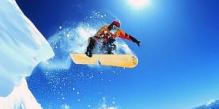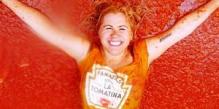AFL injury absences at a high in 2010
AFL players missed more games through injury last year than in any other season in the past decade.
But the AFL's medical experts say it will be several years before they can tell with confidence whether this season's interchange rule alterations have curbed the trend of increasing injuries.
Games missed due to shoulder sprains and dislocations, spinal injuries and knee cartilage injuries were all at 10-year highs in 2010, while absences due to ankle sprains were at an equal high.
The AFL's chief medical officer Hugh Seward, who co-authored the annual injury survey, said perennial problems of hamstring, groin and anterior cruciate ligament (ACL) injuries still remained areas of major concern.
After releasing the survey - containing 2010 data - on Wednesday, Seward said he hoped the move from four to three interchange players this year, with the introduction of a substitute, would help, but it was too early to make an accurate assessment.
"It probably will take us several years," Seward said.
"The purpose of this sort of information is long-term and it's much more accurate when you look at things over a long period of time."
He suspected the growing rate of shoulder injuries was a result of an increased number and intensity of tackles, although an AFL research project has been launched to find out.
AFL football operations manager Adrian Anderson said it was hoped the interchange alterations would cause this year's injury rate to at least plateau, if not decrease.
He said it had already been shown to stall the tackling rate.
That climbed steadily from 88 tackles per game in 2005 to 134.6 last year, but has remained flat at 134 so far this season.
Seward and survey co-author John Orchard also said synthetic ligament surgery was unlikely to be the answer for the majority of ACL rupture victims.
While players have made quicker returns than when using traditional grafts, some such as Sydney's Nick Malceski and Port Adelaide's David Rodan have had to repeat the procedure, after the initial graft failed.
Seward and Orchard said that given the uncertainty about the long-term durability of the synthetic method, it would mostly be used for players late in their careers.
"We think that there's probably a role for the LARS (artificial) ligament, but it won't be for the majority of ACL injuries, nor for the majority of the players," Seward said.
 © 2025 AAP
© 2025 AAP















Post a comment about this article
Please sign in to leave a comment.
Becoming a member is free and easy, sign up here.